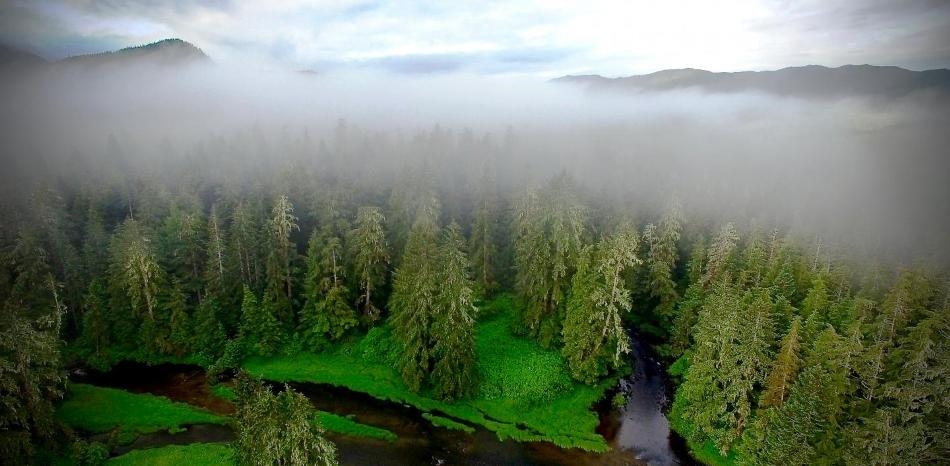Aug 31 2016
Human occupation is usually associated with deteriorated landscapes, but new research shows that 13,000 years of repeated occupation by British Columbia's coastal First Nations has had the opposite effect, enhancing temperate rainforest productivity.
 New research shows that 13,000 years of repeated human occupation by British Columbia's coastal First Nations has enhanced temperate rainforest productivity. (CREDIT: Will McInnes/Hakai Institute)
New research shows that 13,000 years of repeated human occupation by British Columbia's coastal First Nations has enhanced temperate rainforest productivity. (CREDIT: Will McInnes/Hakai Institute)
Andrew Trant, a professor in the Faculty of Environment at the University of Waterloo, led the study in partnership with the University of Victoria and the Hakai Institute. The research combined remote-sensed, ecological and archaeological data from coastal sites where First Nations' have lived for millennia. It shows trees growing at former habitation sites are taller, wider and healthier than those in the surrounding forest. This finding is, in large part, due to shell middens and fire.
"It's incredible that in a time when so much research is showing us the negative legacies people leave behind, here is the opposite story," said Trant, a professor in Waterloo's School of Environment, Resources and Sustainability. "These forests are thriving from the relationship with coastal First Nations. For more than 13,000 years --500 generations -- people have been transforming this landscape. So this area that at first glance seems pristine and wild is actually highly modified and enhanced as a result of human behaviour."
Fishing of intertidal shellfish intensified in the area over the past 6,000 years, resulting in the accumulation of deep shell middens, in some cases more than five metres deep and covering thousands of square metres of forest area. The long-term practice of harvesting shellfish and depositing remnants inland has contributed significant marine-derived nutrients to the soil as shells break down slowly, releasing calcium over time.
The study examined 15 former habitation sites in the Hakai Lúxvbálís Conservancy on Calvert and Hecate Islands using remote-sensed, ecological and archaeological methods to compare forest productivity with a focus on western red cedar.
The work found that this disposal and stockpiling of shells, as well as the people's use of fire, altered the forest through increased soil pH and important nutrients, and also improved soil drainage.
This research is the first to find long-term use of intertidal resources enhancing forest productivity. Trant says it is likely similar findings will occur at archaeological sites along many global coastlines.
"These results alter the way we think about time and environmental impact," he said. "Future research will involve studying more of these human-modified landscapes to understand the extent of these unexpected changes."
The study appears today in Nature Communications.